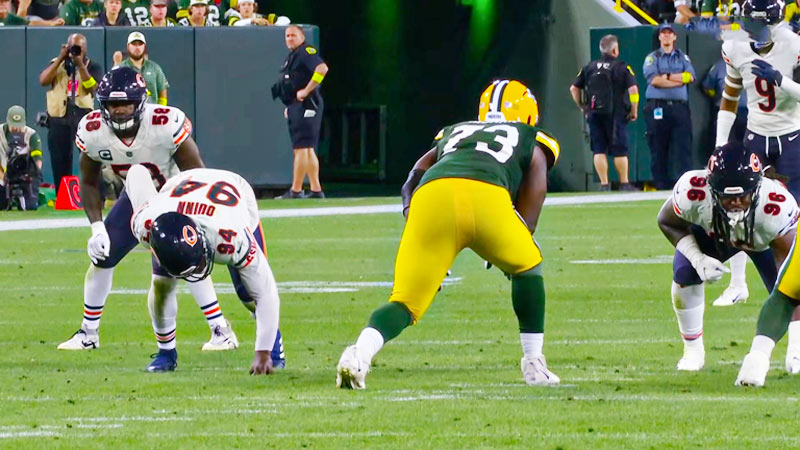In the realm of football, few scenarios encapsulate the heart-pounding intensity of decision-making quite like the “4th and 1” situation. This pivotal juncture often presents coaches and teams with a high-stakes choice that can swing the momentum of a game and shape its ultimate outcome.
The seemingly straightforward equation—just one yard to gain—transforms into a complex strategic puzzle that bridges analytics, tradition, and gut instincts.
In this blog post, we delve into the multifaceted world of “4th and 1” situations, unraveling the significance, strategies, and evolution that define this critical aspect of the game.
What Is Football 4th And 1?
In football, “4th and 1” signifies a critical game situation where the offense has reached its fourth down and is left with just one yard to advance in order to achieve a first down.
In American football, teams are granted four downs (or attempts) to move the ball at least ten yards. If they succeed, they earn a new set of four downs.
However, when a team finds itself in a “4th and 1” scenario, it often implies that their previous three attempts were unsuccessful in covering the necessary distance.
This situation demands a strategic decision: either attempt to gain that one yard through a rushing play or short pass, or opt for a field goal or punt to position the opposition further down the field.
Successful execution during “4th and 1” can sustain an offensive drive, whereas failure usually results in a turnover on downs, granting the opposing team an advantageous field position.
Strategic Approaches of Football 4th And 1
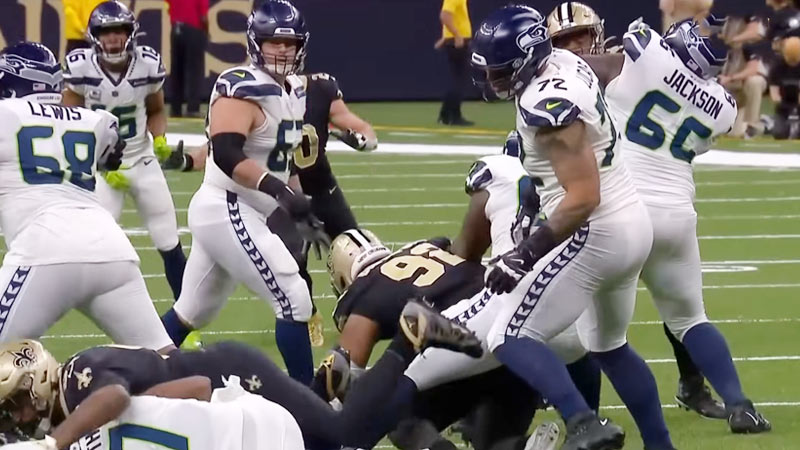
In football, facing a “4th and 1” situation requires careful consideration of strategic approaches due to their pivotal nature in the game. Coaches and teams often weigh several factors before deciding on their course of action:
Rushing Play
A straightforward option is to use a rushing play, where the offense attempts to gain the necessary yardage by running the ball.
This approach relies on the offensive line’s strength and the running back’s ability to quickly burst through the defensive line.
Quarterback Sneak
In this tactic, the quarterback takes the snap and immediately advances through a gap in the offensive line. It capitalizes on the element of surprise and the quarterback’s size to potentially gain the required yard.
Short Pass
Employing a short passing play can exploit a quick throw to a receiver or tight end in close proximity. Timing and accuracy are crucial for success in this approach.
Field Goal
Opting for a field goal attempt is a viable choice if the distance is within the kicker’s range. This decision ensures points on the scoreboard but forfeits the opportunity for a new set of downs.
Punt
Punting the ball can pin the opposing team deep into their territory, making it harder for them to score. This is usually chosen when the field position is more crucial than gaining a single yard.
Trick Play
Coaches might opt for a surprise play, such as a fake punt or a trick play, to catch the defense off-guard and secure the necessary yardage.
Read the Defense
Decisions depend on reading the defensive formation, evaluating the opponent’s strengths, and exploiting potential weaknesses. A quick assessment helps in making the right choice.
Ultimately, the decision hinges on the team’s confidence in their offense, the score, the time remaining in the game, the field position, and the quality of the opposing defense.
Coaches must analyze these factors to make a calculated and strategic choice during a “4th and 1” scenario, aiming to maximize their chances of success and gain an edge in the game.
Evolution of 4th and 1 Strategies
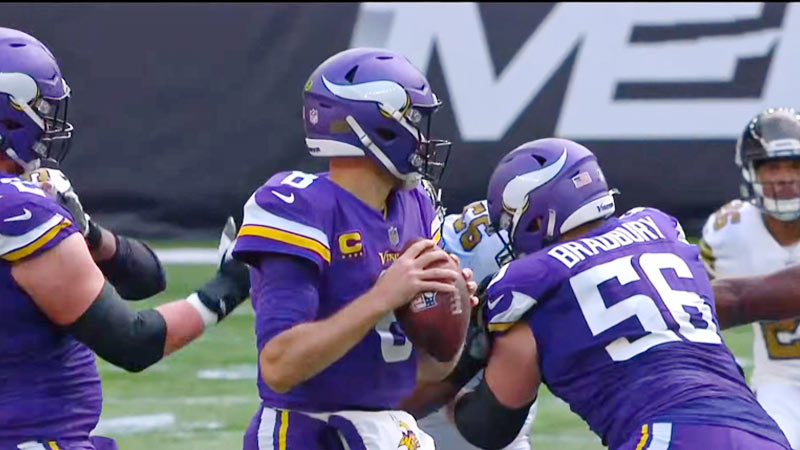
The strategies employed in “4th and 1” situations in football have evolved over time due to changes in coaching philosophies, player skills, rule modifications, and advancements in analytics.
The evolution can be understood through various eras:
Traditional Approaches (Early to Mid-20th Century)
In the early days of football, teams typically played conservatively on “4th and 1,” often choosing to punt or attempt a field goal.
The emphasis was on field position and defensive strength rather than aggressive offensive tactics.
Run-Heavy Era (1960s – 1980s)
As the game evolved, coaches began favoring power running plays on “4th and 1.” Teams relied on strong offensive lines and bruising running backs to gain that crucial yardage. Quarterback sneaks and dive plays were common choices.
Strategic Passing (1990s – 2000s)
The passing game gained prominence, leading to more teams opting for quick passes on “4th and 1” situations. Short, high-percentage passes were seen as safer options to move the chains.
Analytics and Risk-Taking (2010s – Present)
The rise of advanced analytics has influenced coaches to take a more calculated approach to decision-making.
Data-driven analysis has encouraged risk-taking, with some teams opting for aggressive play-calling like going for it on “4th and 1” more often, based on statistical models.
Versatility and Creativity (Recent Trends)
Modern strategies focus on versatility and creativity. Coaches are employing trick plays, misdirections, and unorthodox formations to catch defenses off-guard. Quarterback mobility is also exploited with options and rollouts.
Situational Awareness and Context
Coaches are increasingly considering the game’s context—score, time, opponent, and field position—when making decisions on “4th and 1.” Aggressiveness might increase if trailing or facing high-scoring teams.
Specialized Players and Roles
Teams now have specialized players like short-yardage running backs or powerful fullbacks for “4th and 1” scenarios.
Additionally, versatile quarterbacks who can run or pass effectively have altered the decision-making landscape.
Game Theory and Adaptive Strategies
Coaches are applying game theory principles to maximize expected points based on the situation. This means decisions on “4th and 1” aren’t just about converting, but also about maximizing potential outcomes.
The evolution of “4th and 1” strategies reflects a shift from conservative approaches to more calculated, analytical, and dynamic decision-making.
Teams now balance tradition with innovation, aiming to optimize their chances of success while adapting to the changing landscape of football.
Field Goal in the Football 4th And 1?
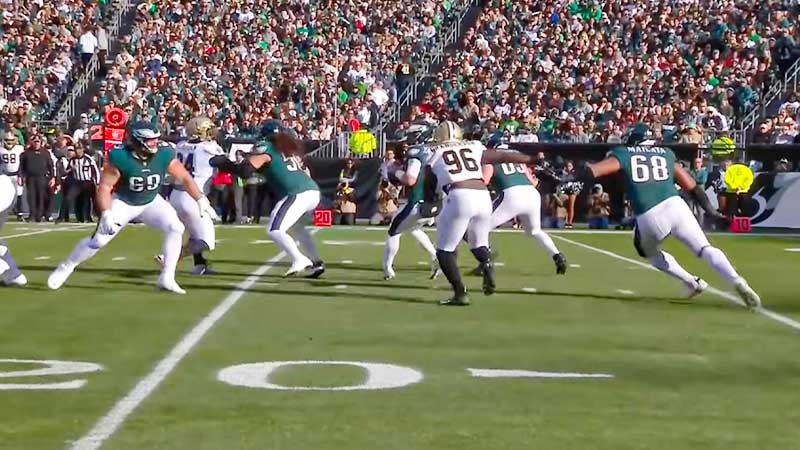
Opting for a field goal on “4th and 1” in football is a strategic decision where a team chooses to attempt a kick through the goalposts instead of attempting to gain one yard for a first down.
This decision is often influenced by factors like the team’s confidence in their kicker’s accuracy and leg strength, the scoreline, time remaining in the game, and field position. Choosing a field goal guarantees a scoring opportunity, adding three points to the scoreboard.
However, it also forfeits the chance to extend the offensive possession and potentially score a touchdown. Teams might choose this option when facing a tight score, late in the game, or if their kicker has a consistent track record.
The decision to kick a field goal on “4th and 1” balances the immediate points gained with the potential for a more substantial offensive outcome.
Punts in 4th and 1 Strategy
Punting on “4th and 1” in football involves kicking the ball downfield to the opposing team rather than attempting to gain a single yard for a first down.
This strategic choice has both advantages and disadvantages, dependent on the game situation and field position.
Advantages
- Field Position: Punting on “4th and 1” can pin the opposing team deep in their own territory, making it harder for them to score. This strategy prioritizes field position over immediate points.
- Risk Mitigation: Punting minimizes the risk of turning over the ball to the opponent near your own goal line, which could lead to easy scoring opportunities for the other team.
- Trust in Defense: If a team has a strong defense, punting ensures that the opposing offense has to cover a longer distance to score, increasing the likelihood of a defensive stop.
Disadvantages
- Lost Possession: Punting relinquishes the offensive possession and gives up an opportunity to maintain a drive, score, and potentially control the game’s tempo.
- Scoreboard Impact: Choosing to punt when trailing may not be advisable if a team needs to catch up in points quickly.
- Momentum Shift: Punting in critical situations can potentially shift momentum in favor of the opponent, particularly if they capitalize on the favorable field position.
The decision to punt on “4th and 1” depends on the score, time remaining, the team’s offensive and defensive strengths, and the overall game strategy.
Coaches must carefully assess these factors to make an informed choice that maximizes their team’s chances of success.
Significance of Football 4th And 1?
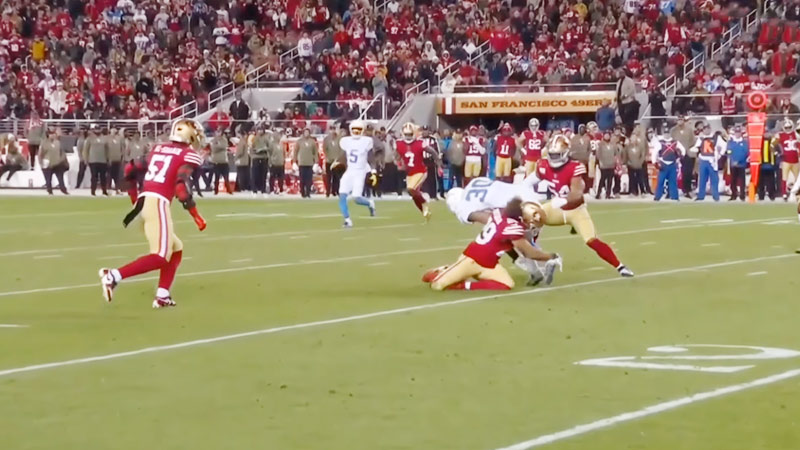
The significance of a “4th and 1” situation in football extends beyond its numerical value. It represents a crucial juncture where strategic decision-making intersects with the physical execution of the game.
This scenario encapsulates the essence of football’s strategy, competition, and drama, embodying several important aspects:
Game Management
“4th and 1” tests a coach’s ability to manage the game effectively. Coaches must weigh risk and reward, considering factors like field position, score, time left, and opponent’s strength to make a calculated decision that can influence the outcome.
Critical Moments
The importance of a “4th and 1” situation intensifies during pivotal moments, such as close games or late in the fourth quarter. The decision can swing momentum, change the course of the game, or even decide the winner.
Strategic Complexity
The scenario demands a nuanced understanding of both offensive and defensive strategies. Teams need to anticipate opponents’ reactions, adjust tactics on the fly, and make the best choice based on situational analysis.
Pressure and Execution
Players must handle pressure situations with precision and execution. The offense must gain a yard against a determined defense, showcasing their physical prowess, teamwork, and individual skills.
Risk vs. Reward
The decision to go for it, kick a field goal, or punt highlights the inherent balance between risk and reward in football.
Coaches must navigate this delicate equilibrium, aiming to maximize potential gains while minimizing potential losses.
Spectacle and Drama
The tension of a “4th and 1” scenario captivates fans, making them active participants in the decision-making process.
The suspense generated amplifies the drama of the game and contributes to the emotional investment of viewers.
Legacy and Legend
Successful conversions or stops on “4th and 1” can become legendary moments in football history, cementing players, coaches, and teams in the annals of the sport.
Adaptation and Evolution
Over time, the strategies employed on “4th and 1” have evolved, reflecting changes in coaching philosophies, player skills, and analytics. This mirrors the dynamic nature of the sport itself.
“4th and 1” situation transcends its numerical description. It embodies the strategic essence of football, encompassing decision-making, physical execution, momentum shifts, and the intricate interplay between offense and defense.
As a microcosm of the game’s complexity, “4th and 1” captures the heart of football’s allure, making it an enduring and cherished aspect of the sport.
FAQs
What is “4th and 1” in football?
“4th and 1” signifies a scenario where an offensive team faces its fourth down and has a mere one yard to gain for a first down. This high-pressure moment demands a strategic decision: attempt to gain that yard, kick a field goal, or punt for field position.
Why is “4th and 1” so crucial?
“4th and 1” encapsulates football’s essence—strategy, competition, and excitement. The choice made can shift momentum, alter game trajectories, and test the mettle of coaches and players in critical situations.
How have strategies evolved over time?
Historically, coaches leaned towards conservative choices. However, modern football analytics and creative tactics have led to a dynamic shift, with teams embracing riskier options and inventive plays.
What factors influence the decision?
The decision on “4th and 1” hinges on numerous factors: score, time, field position, opponent’s strength, offensive capabilities, and defensive confidence. Coaches must navigate these variables to make the best call.
How does the outcome impact the game?
Conversions or stops on “4th and 1” can be game-changers, altering field position, momentum, and scoreboard dynamics. Successful conversions extend drives, while stops provide opportunities for the opposing team.
Wrapping Up
In American football, the “4th and 1” scenario emerges as a microcosm of strategic ingenuity, tactical prowess, and the fine balance between risk and reward.
Its evolution mirrors the dynamic nature of the sport itself, reflecting shifts in philosophy, technology, and game theory.
As we dissect this high-stakes moment, we unveil a realm where strategy meets execution, where numbers fuse with gut feelings, and where each yard represents not only a numerical distance but an emblem of football’s heart-pounding brilliance.
Best of luck.

